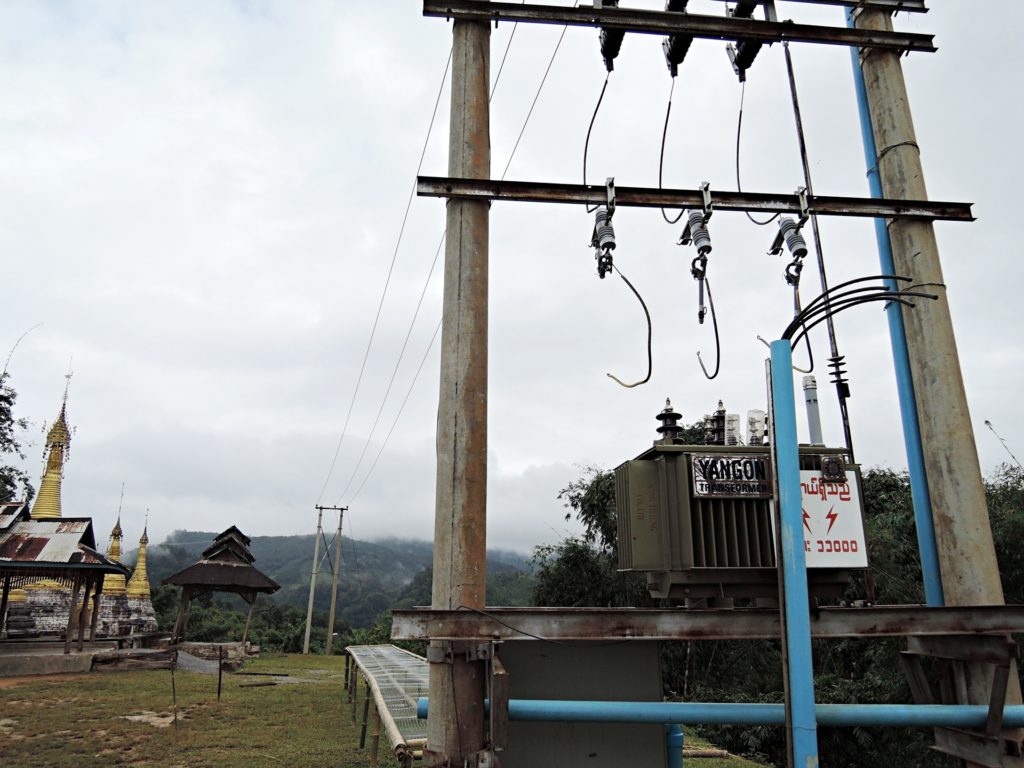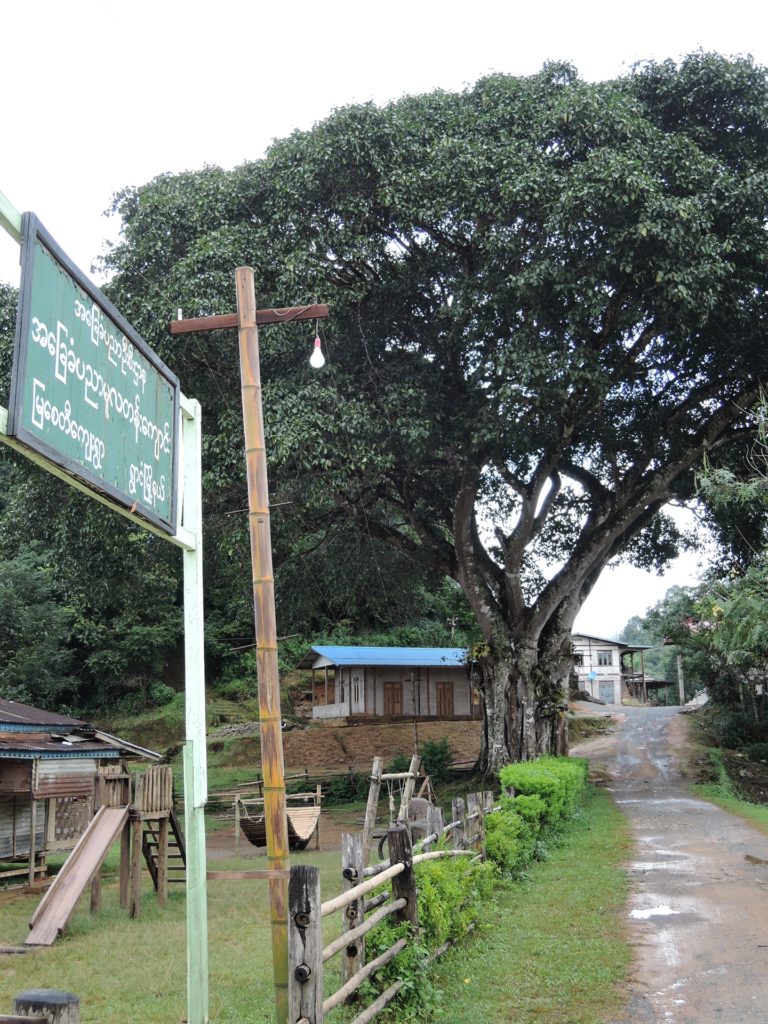[Juhani Klemetti] I had recently a pleasure to join Siemenpuu’s Mekong program’s project monitoring and designing trip to Myanmar. We traveled together with the Siemenpuu’s local partner organization Mekong Energy and Ecology Network (MEE Net) to Yangon and then to Shan state. MEE Net held a two-day training workshop on conducting Community-centered Strategic Environmental Assessment (C-SEA) in Danu Special Administration Zone in Southwestern Shan state. The participants were representatives from mountain and valley communities who were concerned of the management of the natural resources in their communities and in their area.
During the workshop and our trip in the area, we came to understand that one topic of concern was electricity and the debate whether to connect or not to the national power grid, which had recently reached several of the villages. We saw recently built transmission lines which climbed the banks of misty mountains and crossed the forest covered valleys. In the workshop village, we were also met with a power transformer, which was ready to use, but there were no connecting lines to houses yet. Instead, there was an operational local electricity network from village’s own microhydro power plant.
We heard from the villagers of their troubled relationship with the new grid as they wanted to be modern and connect to it, but the cost to join the grid was high. Some villagers told that every household in the community was required to pay between 200 to 700 USD to connect. Some said that they had already paid for it but were yet to be connected. In addition, one of the pull factors to join the grid was villagers’ concerns over the forest areas which were decreasing as people cut firewood for cooking instead of having possibility to use an electric cooking stove. In rural Myanmar, cooking is still mostly done on fire as electricity is not widely available, and gas cookers are not widely used because of the tight regulations the government has imposed on them.


The national electrification rate in Myanmar is very low as only approximately 30% of the population is connected to the national grid. Most of the connected people are living in urban areas and the people who live in rural areas have mainly relied on household and community level energy solutions such as solar panels and microhydro. In 2014, the World Bank supported the Myanmar government to draft the National Electrification Plan (NEP), which aims people in Myanmar to have universal access to electricity (national grid) by 2030. The World Bank has given out a 400 million USD loan, of which 320 million is allocated towards the extension of national grid, and 80 million to finance off-grid solutions (before the target of country wide national grid will be achieved).
On its website, the World Bank states that with the funds it has provided, 750 000 households will be connected to the grid by 2021. The same organization also manifests that “The World Bank is now fully reengaged with the government to support reforms that will benefit all of the people of Myanmar, including the poor and vulnerable.”
There are few significant problems in this. Firstly, the rural communities are not connected to the national grid without paying for a significant amount of money, which most of them do not have. Secondly, villages that had paid to connect with the grid do not receive steady 24/7 supply of electricity, and in some cases has left them in more insecure situation compared to the source they used to produce electricity at the community level. And thirdly, reengaging fully with a government that is waging war and ethnic cleansing towards its minority populations, is hard to see as support of reforms that would benefit all of the people in Myanmar. The risk that the loan would be misused, is high.
In recent years, the World Bank has drawn a lot of criticism of the impacts of the projects they have initiated. In the Mekong region, the World Bank has also faced hard criticism for example from environmental organizations and local communities opposing several Bank funded dam projects. One could say that too often World Bank’s projects look more as market facilitation for large corporations instead of benefiting all the people of an individual country. Currently, it looks like Myanmar’s NEP will be a continuation of one of those projects that will stimulate corruption, benefit large corporations and leave the poor people even poorer.
While 84% of rural households in Myanmar do not have access to electricity according to the available statistics, many of the household still have access to electricity through community and household level solutions. Along with the national grid extension, the country is also focusing on the other end of the grid, namely electricity production. There are plenty of plans for large scale dams and coal-fired power plants. Old-fashioned thinking of building a centralized power system with a country wide national grid and large scale electricity production facilities still lives strong in Myanmar even though the country has long history of community level electricity production. These community level solutions are in most cases more sustainable, and if upgraded to meet today’s technology they are in most cases well able to feed the relatively low consumption of electricity in the rural Myanmar.
To conclude, the World Bank should not keep supporting the extension of the national grid because by that, they are supporting the creation of a centralized power system which is, especially in this region, driven by unsustainable energy production, corporate interests and corruption. Without strict financial monitoring, they are enabling a government that is responsible of ongoing misconduct towards its own people, to receive funds. Instead, the World Bank and Myanmar should look into the future, and instead of going on with 6 billion USD project to have country wide grid in Myanmar, they should support Myanmar to become a model country in the world where the rural electrification is based on sustainable community and household level off-grid solutions. This model could be further taken to African countries which are in near future facing the same challenges and ambitions to provide electricity for its citizens.
Juhani Klemetti, 2.12.2016
Author is Siemenpuu’s Mekong group member. He participated in programme monitoring trip to Myanmar in November 2016.
